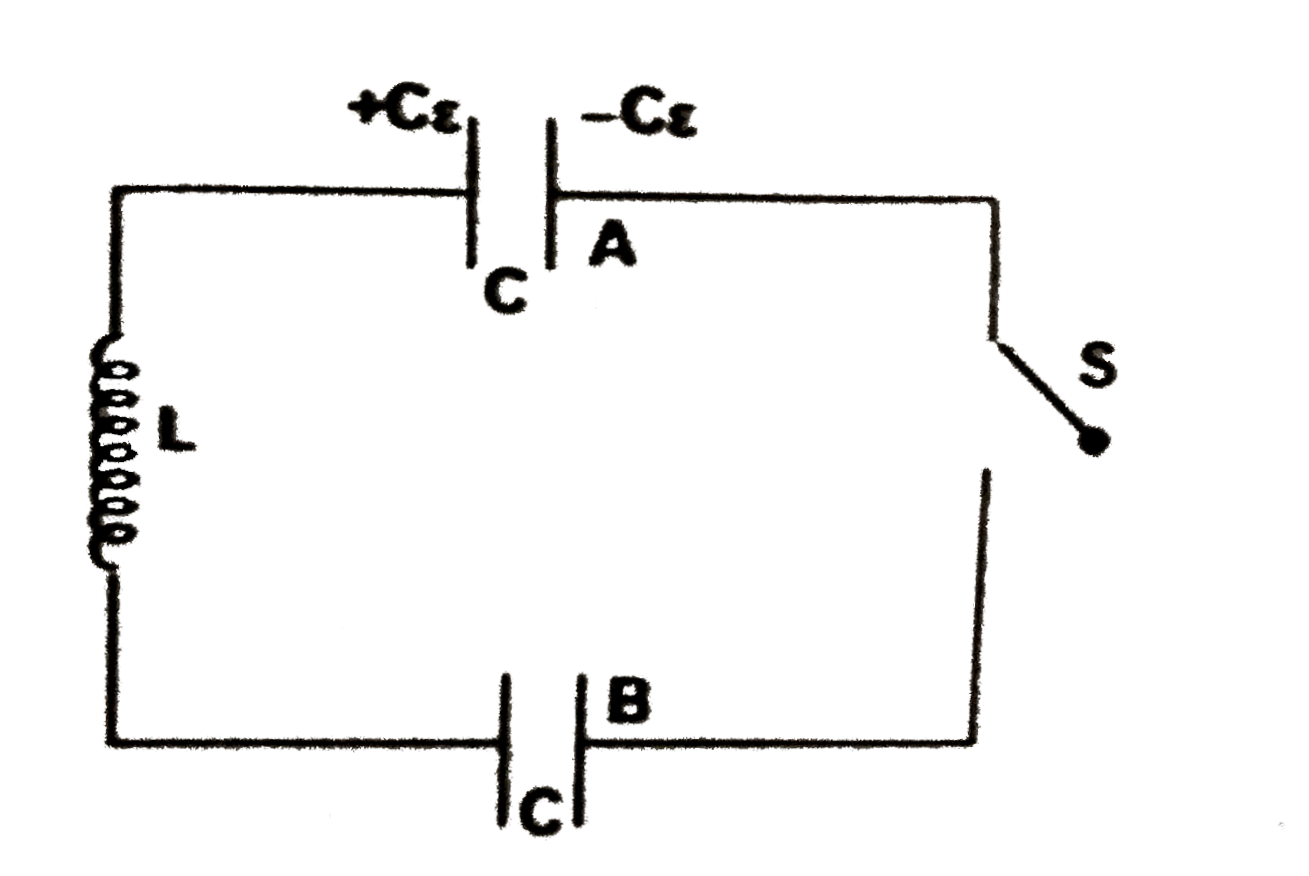When switch is thrown to the left in figure, the plates of capacitor 1 acquire a potential
difference . Capacitors 2 and 3 are initially uncharged. The switch is now thrown to the right.
What are the final charges and on the capacitors?

The correct Answer is:
Step by step video, text & image solution for When switch S is thrown to the left in figure, the plates of capacitor 1 acquire a potential difference V_0. Capacitors 2 and 3 are initially uncharged. The switch is now thrown to the right. What are the final charges q_1, q_2 and q_3 on the capacitors? by Physics experts to help you in doubts & scoring excellent marks in Class 12 exams.
Updated on:21/07/2023Topper's Solved these Questions
- Capacitance BOOK - MOTIONCHAPTER - Capacitance EXERCISE - EXERCISE -4 LEVEL 1
15 Videos
- Capacitance BOOK - MOTIONCHAPTER - Capacitance EXERCISE - EXERCISE -4 LEVEL II
19 Videos
- Capacitance BOOK - MOTIONCHAPTER - Capacitance EXERCISE - EXERCISE -3 LEVEL 1
31 Videos
- CALORIMETRY BOOK - MOTIONCHAPTER - CALORIMETRY EXERCISE - EXERCISE - 3 Section - B
4 Videos
- CENTRE OF MASSBOOK - MOTIONCHAPTER - CENTRE OF MASSEXERCISE - Exercise - 4 Level-II
20 Videos
Similar Questions
Figure 25-27 displays a 16.0 V battery and 3 uncharged capacitors of capacitances C1=4.00μF,C2=6.00μFandC3=3.00μF The switch is thrown to the left side until capacitor 1 is fully charged. Then the switch is thrown to the right. What is the final charge on (a) capacitor 1, (b) capacitor 2 and (c ) capacitor 3?

View SolutionCharges q1 , q2 and q3 are placed on capacitors of capacitance C1, C2 and C3, respectively, arranged in series as shown. Switch S is there closed. What are the final charges q'1, q'2 and q'3 on the capacitors?
Given q1=30μC, q2=μC, q3=10μC, C1=10μF, C2=20μF, C3=30μF and ε=12volt

View Solution
Knowledge Check
In the given figure switch is open initially and capacitor C2 is unchanged

Potential difference on C1just after closing the switch isAV3BV6CV4DV2
Initially capacitor 'A' is charged to a potential drop ε and capacitor B is uncharged At t=0, switch S is closed, then the maximum current through the inductor isAε√C2LBε√CLC2ε(CL)Dε2√CLA capacitor of capacitance C is charged to a potential difference V from a cell and then disconnected from it. A charge +Q is now given to its positive plate. The potential difference across the capacitor is now
AVBV+QCCV+Q2CDV−QC, if V<CV
The plates of a capacitor of capacitance C are given the charges Q1andQ2 as shwon in figure. Now the switch is closed at t =0. Find the charges on plates after time t.

View SolutionConsider the circuit shown in the figure. Capacitors A and B, each have capacitance C=2F. The plates of capacitor A are shorted using a wire of resistance R=1Ω while the left plate of capacitor B is given an initial charge Q=+4C. The switch is closed at a time t=0. What will be the initial current (in ampere) drawn from the battery immediately after the switch is closed ?

View SolutionA battery is used to charge a parallel plate combination of two identical capacitors. If the potential difference across the battery is V and the total charge Q flows through the battery during the charging process then 1) The charge on each capacitor is Q/2 and the potential of each capacitor is V/2 2) The charge on each capacitor is Q and the potential of each capacitor is V 3) The charge on each capacitor is Q/2 and the potential of each capacitor is V 4) The charge on each capacitor is Q and the potential of each capacitor is V/2
View SolutionA capacitor of capacitance C is charged to a potential difference V from a cell and then disconnected from it. A charge +Q is now given to its positive plate. The potential difference across the capacitor is now
View SolutionIf A is the area of each plate, charge on it is q and potential difference is V then the distance between the parallel plate capacitor is
View Solution
